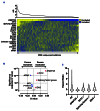Exclusion of persistent mutations in splicing factor genes and isocitrate dehydrogenase 2 improves the prognostic power of molecular measurable residual disease assessment in acute myeloid leukemia
- PMID: 37345484
- PMCID: PMC10828788
- DOI: 10.3324/haematol.2023.283510
Exclusion of persistent mutations in splicing factor genes and isocitrate dehydrogenase 2 improves the prognostic power of molecular measurable residual disease assessment in acute myeloid leukemia
Figures


Comment in
-
Molecular measurable residual disease: staring at red herrings.Haematologica. 2024 Feb 1;109(2):371-373. doi: 10.3324/haematol.2023.283708. Haematologica. 2024. PMID: 37584293 Free PMC article. No abstract available.
References
-
- Walter RB, Ofran Y, Wierzbowska A, et al. . Measurable residual disease as a biomarker in acute myeloid leukemia: theoretical and practical considerations. Leukemia. 2021;35(6):1529-1538. - PubMed
-
- Jongen-Lavrencic M, Grob T, Hanekamp D, et al. . Molecular minimal residual disease in acute myeloid leukemia. N Engl J Med. 2018;378(13):1189-1199. - PubMed
Publication types
MeSH terms
Substances
LinkOut - more resources
Full Text Sources
Medical

